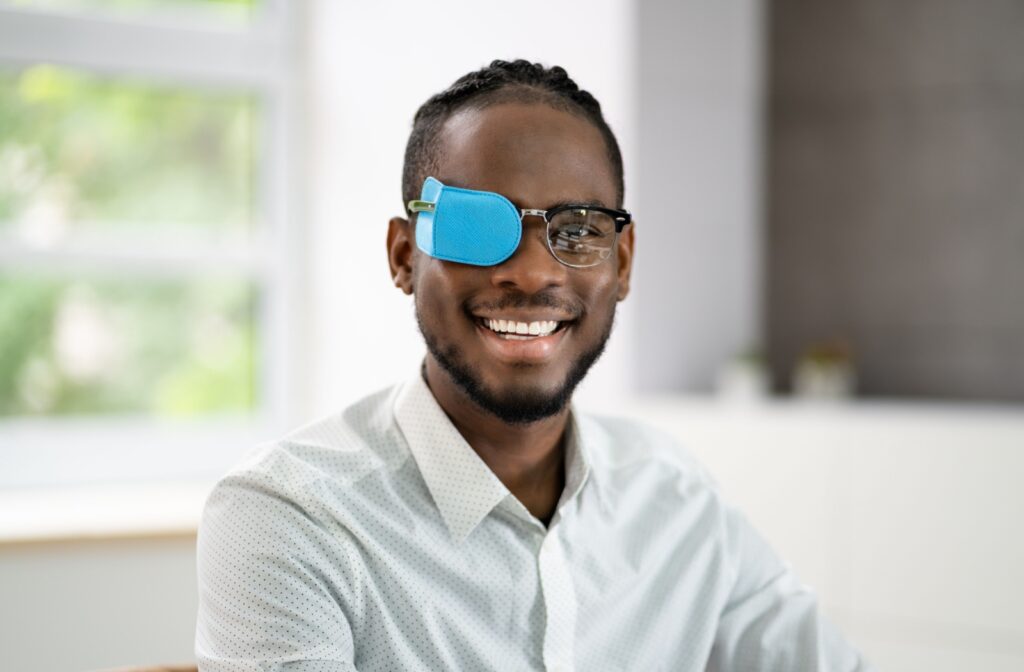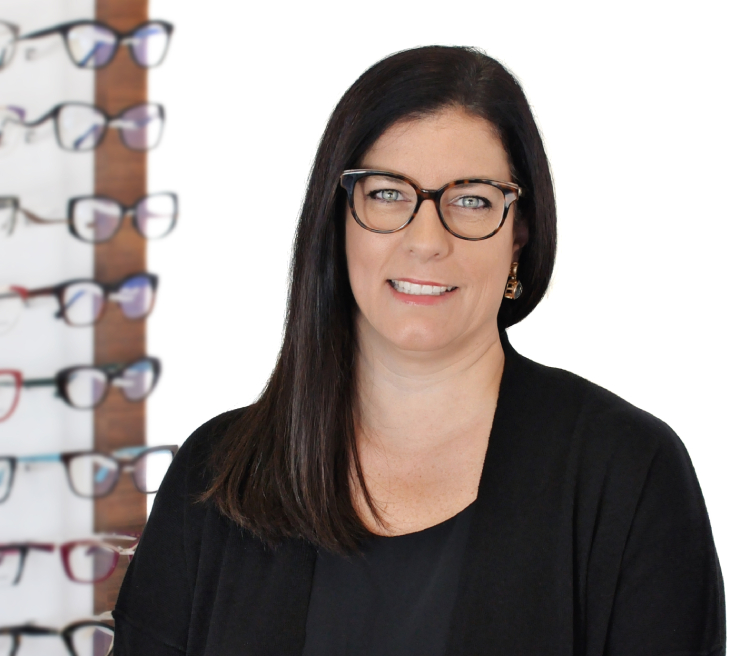If you’ve noticed your child struggling with vision or frequently avoiding tasks like reading, they may have lazy eye, also known as amblyopia—poor vision in just 1 eye. Whether during playtime or schoolwork, this condition can subtly but significantly impact their daily lives.
Fortunately, it’s never too late to treat lazy eye, but treating it earlier often means more effective outcomes. Since amblyopia results from a disconnect between how the brain and the eye work together, treatment like vision therapy is most effective during childhood when the brain is more adaptable.
What Is Lazy Eye?
Lazy eye, or amblyopia, is a vision condition in which the brain and 1 eye don’t work properly together. Over time, the brain tends to favour the stronger eye, leading to decreased vision in the weaker one, and as a result, poor cooperation between your eyes. It’s one of the most common vision disorders in children, yet many parents dismiss it as something that will “go away on its own,” which unfortunately isn’t the case.
Amblyopia can have various causes, including genetics, premature birth, or conditions like strabismus (eye misalignment). Sometimes, an issue like a severe difference in prescription lenses for each eye can also play a role. Detecting these causes early can make all the difference in treatment success.
Types of Lazy Eye
Understanding the different types of lazy eye is crucial for pinpointing the issue. There are 3 main types:
- Strabismic amblyopia occurs when 1 eye is misaligned (crossed or turned), causing the brain to suppress its input to avoid double vision.
- Refractive amblyopia occurs when there is a significant difference in vision strength between the 2 eyes, such as nearsightedness, farsightedness, or astigmatism. The brain favours the clearer image from 1 eye while ignoring the other.
- Deprivation amblyopia occurs when something physically obstructs vision, such as a cataract, preventing visual input from reaching the brain.
Symptoms
Detecting amblyopia can be challenging, especially in young children who cannot express vision difficulties. Watch out for these signs:
- Frequent squinting or shutting 1 eye
- Difficulty judging distances
- Eyes that appear misaligned
- Complaints about blurry vision
- A noticeable preference for 1 eye over the other
If you’ve noticed any of these symptoms in your child, it’s worth booking an appointment with an eye care professional as soon as you can.
What Happens if You Don’t Treat Lazy Eye?
Left untreated, amblyopia can lead to vision impairment in the weaker eye as the brain continues to favour the stronger one. This affects visual development and may also impact children’s academic, athletic, and social abilities. Adults with untreated amblyopia could face limited depth perception and increased difficulty performing tasks requiring fine visual skills.
Worse still, if the stronger eye is later injured or affected by the disease, the person may lose most or all of their functional vision. This is why addressing amblyopia during its critical developmental window is so important.
How Is Lazy Eye Treated?
Treatment for amblyopia focuses on stimulating the weaker eye and optimizing the connection between the eyes and the brain. Some of the most common methods include vision therapy, eye patching, eye drops, and prescription lenses.

Vision Therapy
Vision therapy involves guided visual activities designed to train the weaker eye and improve coordination between the 2 eyes. Exercises may include focusing games, 3D vision tasks, or video games tailored to visual development. A vision therapist can customize a treatment plan for your child’s needs.
Prescription Lenses
Glasses may be prescribed to correct refractive errors, such as nearsightedness or farsightedness. For some children, wearing the correct prescription full-time can significantly boost vision in the weaker eye without additional interventions.
Eyepatch
Traditionally, using an eye patch over the stronger eye was used to treat lazy eye in younger children. Now however, other methods are preferred, as patching is not effective in strengthening the connection between the eyes, and often leads to regression after treatment. Patching is also not an effective treatment for adults.
Medicated Eye Drops
Eye drops containing atropine can temporarily blur the vision in the stronger eye, making the weaker eye work harder. It’s a less intimidating option for children who might refuse or struggle with wearing an eyepatch.
Why Treating Lazy Eye Early Matters
When it comes to amblyopia, the earlier you act, the better. Children’s brains are incredibly adaptable, so their visual pathways can be reshaped during their early developmental years (typically ages 7–9). Prompt treatment often yields faster and more effective results.
Can Lazy Eye Be Treated if You’re Older?
While early intervention tends to offer the best prognosis, that doesn’t mean the door closes after childhood. Studies show that treatments like vision therapy and corrective lenses can still promote improvements in older children, teenagers, and adults. The brain may not be quite as adaptable as it is in early childhood, but meaningful progress is possible with consistent effort.
Who Can Benefit from Treatment?
The simple answer? Almost anyone.
- Infants and toddlers: The most significant improvement opportunities exist in early childhood when the brain’s visual systems are still forming.
- School-age children: Even after the critical developmental window, many kids can still benefit from treatment.
- Teenagers and adults: While progress may require more effort, studies show that adults with untreated amblyopia can still see meaningful improvements through therapy.
No matter your age, it’s never too late to seek advice from a trusted eye care professional and take those first steps toward better vision.
The Clear Choice for Lazy Eye Treatment
Amblyopia doesn’t fix itself—it requires attention, time, and focus. The earlier you intervene, the better the results. However, even if you missed the early years, don’t lose hope; many effective treatments are now accessible for teens and adults.
At Ottawa Vision Therapy, we believe everyone can live their true potential when they have the visual skills needed to succeed. Contact us today if you suspect your child or teenager might have amblyopia and speak with an eye care provider about treatment options.




